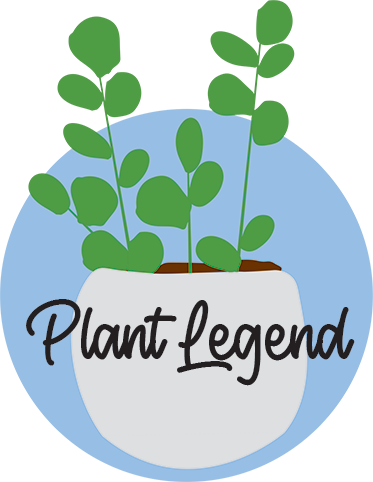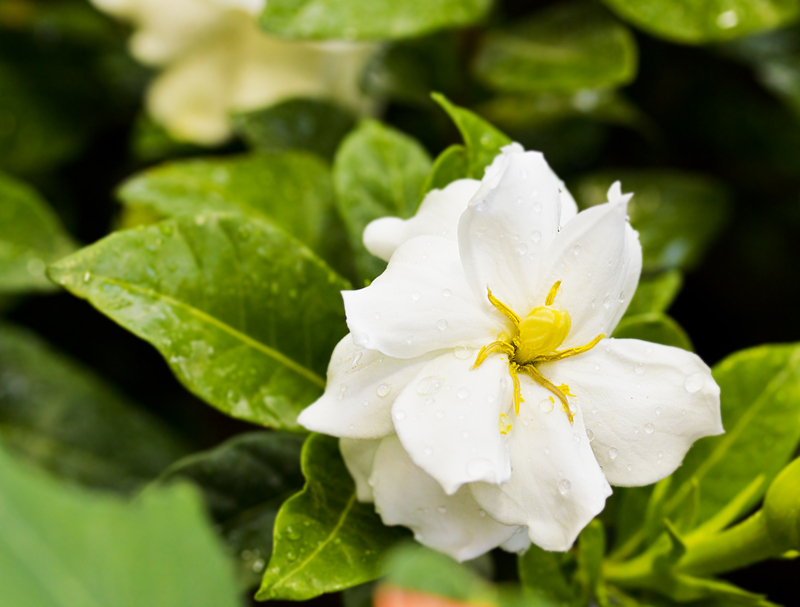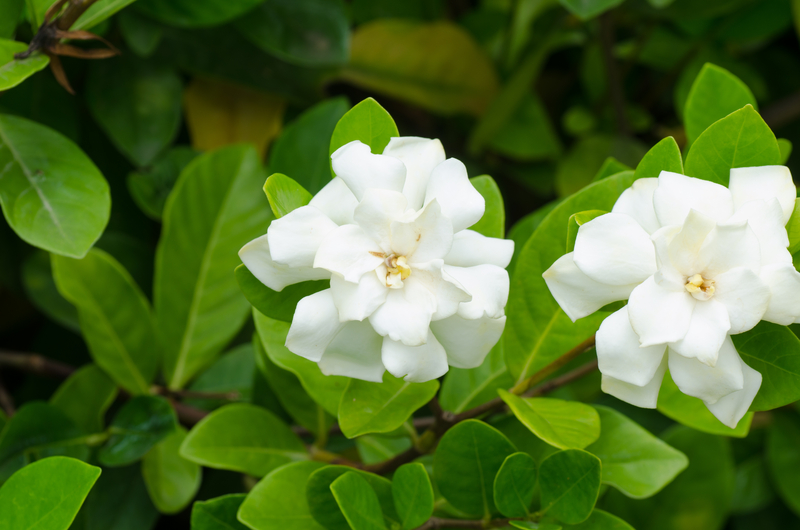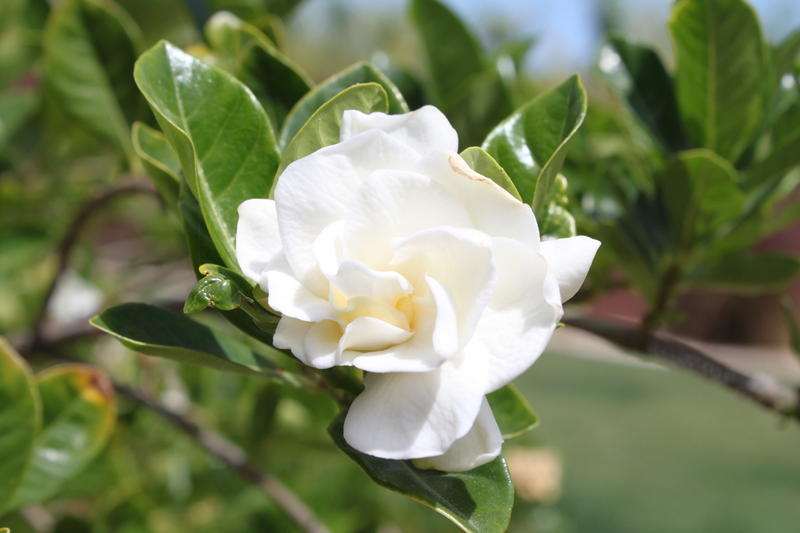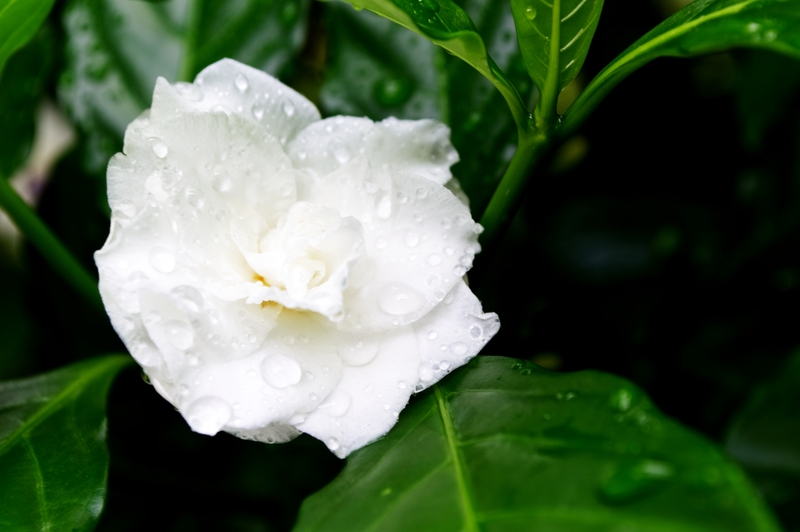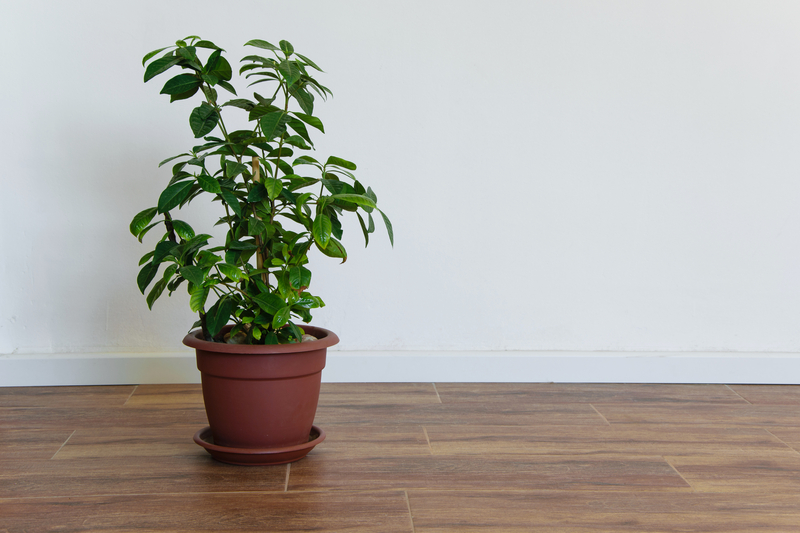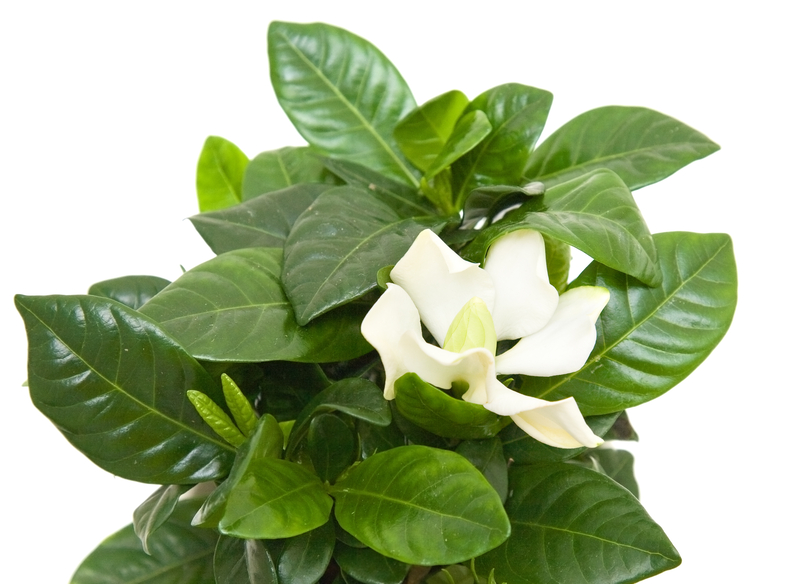Gardenia plants are popular, well-known shrubs for their waxy white flowers and spectacular fragrance, a scent commonly found in perfumes and teas. Gardenias, or gardenia jasminoides, are wildly sought-after houseplants because of this fragrance—you will not find another natural scent like it.
Our article will take you through the steps of gardenia care so that you can brighten up your home with this stunning houseplant and its fragrant flowers.
Common Names
- Cape Jasmine
- Common Gardenia
- Gardenia Jasminoide
What Soil Works Best for a Gardenia Plant
When planting your gardenia jasminoide, use a pot with a drainage hole to pour excess water into a tray. Gardenia plants are acid-loving plants, so you will want to choose acidic soil. The potting soil pH levels should be lower, around 5.0 and 6.0, and you will want to avoid placing your gardenia plant anywhere that the pH may be too high, such as a concrete wall.
You can use a potting mix with a peat base, such as a mix of coarse sand and peat moss. However, if you have just bought your gardenia plant, it is likely to already be in the correct soil. Check to see if the soil mix has an acidic compost called ericaceous—this compost is used to help keep the ground at the right acidic level for your gardenia plant.
To check the acidity level of the potting mix, you can get a soil tester kit. If the soil is not acidic enough, you can try a few different techniques to lower the potting soil pH levels. Vinegar heavily diluted in water, one cup of vinegar to one gallon of water, can be used to water your gardenia plant once a month. Otherwise, Miracid is a product often used in the plant world to keep your potting soil at the correct pH levels for your acid-loving plant.
How to Fertilize a Gardenia Plant
Just like outdoor gardenias, your indoor houseplant will need fertilization. There are specific fertilizers for gardenias, but any dilute fertilizer can be used for acid-loving plants. You should attempt to fertilize your gardenia jasminoide every two to four weeks from March to October, the gardenia growing season. There is no need to fertilize from November to February.
How Much Sun Does a Gardenia Plant Need?
Having a spot for your gardenia before bringing it home is essential because they do not like moving around much. Pick an area with a lot of indirect bright light, but try to avoid direct afternoon sunlight. Too much direct sunlight will scorch the gardenia flowers, and they might fall off. It is okay to have the morning sun hit the gardenia, but the gardenia should get some afternoon shade during the hot summertime weather. The gardenia jasminoide needs about four hours of indirect bright light a day for the gardenia flowers to bloom.
A south-facing room with windows will be the ideal room for your gardenia houseplant. In the winter, supplement the natural light with artificial plant lights to keep the gardenia jasminoide thriving. By adding a second light source during the shorter days of the year, you will provide the better conditions necessary to keep your gardenia plant happy.
What Temperature Works Best for a Gardenia Plant?
Gardenias can be stubborn when it comes to temperature and react harshly by dropping their buds. Gardenia plants thrive at 65 to 70 degrees Fahrenheit during the daytime, and night temperatures need to be between 55 and 65. Buds will fall off your gardenia plant if temperatures reach above 70 degrees Fahrenheit. Another way to prevent gardenia bud drop is by avoiding sudden temperature changes. Gardenia jasminoides are susceptible, and quick temperature changes will cause gardenia flowers to fall.
What Humidity Works Best?
Gardenia plants call for high humidity to thrive. For your new houseplant, do daily misting or use a humidifier. Constant misting and humidifiers will help you maintain the proper humidity necessary to keep your gardenia plant alive. Keep in mind that high humidity can cause bacterial and fungal diseases in your gardenia plant, so there must be good air circulation in the spot you choose for your houseplant.
Another way to produce humidity is by sitting the gardenia on a pebble tray. It does not need to be anything flashy or fancy, and a pebble tray is something you can easily DIY at home. You have to fill a tray with a layer of pebbles and add water until the rocks are just surfacing above the water. Sit your gardenia plant on the tray, and as the water evaporates, it will increase the moisture in the air for your houseplant.
How Often Do You Need to Water a Gardenia Plant?
Gardenia plants do not like when their soil dries out, but they should not be overwatered either. Keep your gardenia jasminoide moist with daily watering, but check that it needs it before proceeding to water because the schedule could change depending on the season. Water evaporates much more quickly during the summertime so more watering will be necessary. However, you can cut back on watering a bit during the wintertime since there is a decrease in water evaporation. An excellent way to check whether your houseplant needs water is by sticking a finger into the top of the soil—if the first inch or so is dry, it is time to water your houseplant.
Additionally, pay attention to whether the plant’s catch tray needs emptying. You never want your gardenia to be sitting in water because this could cause root rot and overwatering. Overwatering is a common reason why gardenia flower buds may not open and drop off. You will also want to keep water off of the leaves of the gardenia plant. Water on the leaves may cause fungal leaf spots.
A trick to keeping the soil moist is adding a two to four-inch layer of organic mulch. This will keep the soil moist and at a constant temperature.
What Size Do they Get to Typically?
Gardenia plants will grow to a few feet tall and wide with proper sunlight, water, and soil.
Most Common Bugs
Common pests on gardenias are aphids, mealybugs, whiteflies, and spider mites. You can treat aphids and mealybugs by spraying the gardenia plant leaves with a solution of one part liquid soap and one part water. For this to be effective, you will need to spray both the top and the underside of the leaves.
You can also treat spider mites and whiteflies with neem oil.
Most Common Diseases
The most common killers of a gardenia plant are the wrong conditions—cold temperatures and inconsistent watering.
Can You Prune a Gardenia Plant?
Do not hesitate to prune your gardenia when the plant is blooming. Pruning will encourage new growth and prepare the gardenia for next year’s growing season. Prune your gardenia plant by cutting back flowers that are thoroughly done blooming with a clean pair of scissors or shears.
How Do you Propagate a Gardenia Plant?
You can propagate a gardenia plant in the early spring by taking stem cuttings about three to four inches below a leaf node. Place the stem cutting into a potting mix of soil with perlite, and keep it continuously moist. When the stem cuttings sprout roots, transplant them into three-inch pots with the same potting mix.
Can You Repot It?
Try to avoid repotting your gardenia plant as much as possible. Repotting causes the gardenia jasminoide to go into shock, and it will lose its buds. The only time it would be necessary to repot the gardenia is if roots are showing through at the top of the plant. If the houseplant looks happy, leave the gardenia in the pot it came in and place it inside a slightly larger, more decorative pot of your choosing.
Where Does the Plant Originate From Initially?
Gardenias originate from China and Japan, where bright light, cool temperatures, and high humidity. This is generally why gardenia plants thrive on the west and south coasts of the United States. Growing a gardenia jasminoide indoors can take some specific attention, but the benefits of such a beautiful houseplant make it worth it.
What USDA Hardiness Zone Works Best for this Plant?
The USDA Hardiness zone that works best for a gardenia is 8-11.
Is it Toxic?
Gardenia plants are non-toxic to animals and humans.
Conclusion: Gardenia Plant Care
Growing a gardenia plant, especially indoors, can be tricky—but the beautiful, scented blossoms make growing gardenias a rewarding hobby for a gardener who is up for the challenge. The key is to not give up on your new houseplant! Follow our indoor gardenia plant care instructions, and you should be able to grow a full, gorgeous gardenia.
To summarize, the most critical points for a gardenia plant will be the pH level of the potting mix and your home’s temperature. Keep the soil’s pH levels between 5.0 and 6.0 by using a combination of coarse sand and peat moss. The temperatures need to range from 65-70 degrees Fahrenheit in the daytime and 55-65 degrees Fahrenheit during the night. Keep your gardenia plant in bright light, away from the full sun. Water your gardenia enough so that the soil stays moist but does not feel soggy, and empty the catch tray underneath to avoid root rot.
Similar Posts:
Does Boiling Water Kill Weeds?
Can You Repot Plants in the Winter?
What is the Difference Between Annual and Perennial Plants?
Is it OK to Water Plants at Night?
Can You Spray Alcohol on Plants?
How to Increase the Humidity around Plants?
How to Keep Plants Alive on Vacation
